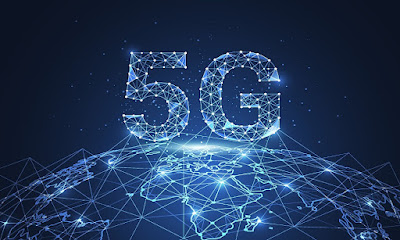5G Technology Market Comprehensive Shares, Historical Trends And Forecast By 2033
The global demand for the 5G technology market is expected to experience a remarkable Compound Annual Growth Rate (CAGR) of 48.3%. By the year 2023, the market's total revenue is projected to reach approximately US$ 19.3 billion. Furthermore, it is anticipated that this market will see substantial revenue growth, reaching an estimated US$ 994.8 billion by the year 2033.
A key aspect driving the demand for 5G technology is its capacity to offer new services with ultra-reliable, available, low-latency connectivity, such as remote control of key infrastructure, automobiles, and medical procedures, which can alter industries.
Request for a Sample of this Research Report:
https://www.futuremarketinsights.com/reports/sample/rep-gb-9011
The advancement of digital transformation has significantly assisted industries in updating their present operations and, as a consequence, expanding their profits throughout the years. Technological concepts like the Internet of Things (IoT), Artificial Intelligence (A.I.), and others are predicted to aid in the growth of the global 5G technology market in the coming years.
According to The GSM Association's Mobile Economy Report 2019, the number of global IoT connections is expected to quadruple to 25 billion between 2018 and 2025, with IoT income reaching US$ 1.2 trillion., The research stated that over 700 million people were expected to enroll in mobile services by 2025, with 5G technology accounting for only 20% of the technical mix.
Certain key players see a 5G future in which remote monitoring ensures clean water, reduces food shortages, and enhances public safety by providing early warnings of floods, earthquakes, and mudslides.
Network slicing is an important tool for service providers to satisfy the various needs of businesses. The technology enables the provider to construct a dedicated virtual network based on the use case or customer service requirements. For example, the network requirements for healthcare providers are likely to be considerably different from those for smart agriculture.
It increases the security of mission-critical services. When network slices are designated for certain services, they improve dependability and simplify operations. During the IMT-2020 (5G) promotion group's 5G trial in January 2020, a market player in China conducted 5G New Radio testing utilizing a 2.6 GHz spectrum. The company's leading position in test completion, as well as the newly obtained findings, are likely to aid in the formation of a set of uniform global standards, allowing China to successfully complete the second phase of 5G testing.
Vendors are vying for the implementation of 5G networks, particularly in North America. The growth of 5G technology is projected to drive market suppliers to build wireless test equipment capable of properly supporting the technology. The Indian government is also trying to establish a fund for the development of 5G technology, which is expected to fuel market growth over the forecast period.
However, small cell installations face onerous regulatory, financial, and administrative requirements in many parts of the world, which is expected to delay the rollout of 5G technology. The high installation cost of tiny cell networks and the lack of security for distantly located outdoor power systems may impede the 5G technology market growth.
Key Takeaways from the 5G Technology Market Report:
Throughout the forecast period, the United States is predicted to have a sizable share of the global 5G technology market. This is because 5G plans offer a comprehensive approach to network technologies. It is achieved by using the ability to innovate and invest while also developing government policies to support and complement those strengths.
The 5G technology market in Asia Pacific is expected to be significant throughout the forecast period, led by China and Japan. This is attributed to major parties continuing to push for the creation of a 5G plus gigabit fiber network, as well as improving multi-frequency collaboration, co-construction, and sharing.
Owing to the vital role of 5G technology in assisting governments and public organizations in making cities smart, the "smart cities" application type is expected to hold considerable revenue throughout the forecast period.
As it contributes to spectral efficiency by reducing signal loss and radio interference, the "5G RAN" technology type and is the most innovative category for key businesses and accounts for a significant percentage.


Comments
Post a Comment